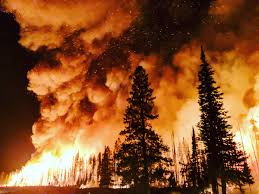Fire safety is a critical aspect of maintaining a secure and functional environment in any property. A fire risk assessment is a crucial process that helps identify potential fire hazards and implement strategies to mitigate risks. Whether you manage a commercial building or a residential property, understanding the essentials of fire risk assessment can help safeguard lives and property.
What is a Fire Risk Assessment?
A fire risk assessment is a systematic examination of a building or area to identify potential fire hazards, assess risks, and implement control measures. The goal is to prevent fires, ensure safety, and establish emergency procedures to handle fire incidents effectively.
Key Components of a Fire Risk Assessment
- Identify Potential Hazards: The first step is to recognize sources of fire hazards within the property. This includes electrical systems, heating equipment, flammable materials, and other potential ignition sources.
- Evaluate Risks: Assess the likelihood of a fire occurring and the potential consequences. Consider factors such as the type of building, occupancy levels, and existing safety measures. Identify any gaps in current fire safety protocols.
- Implement Control Measures: Develop and apply strategies to reduce or eliminate identified risks. This may involve installing fire alarms, improving fire exits, conducting regular maintenance on fire safety equipment, and ensuring proper storage of flammable materials.
- Review and Update: Regularly review and update the fire risk assessment to ensure its effectiveness. This should be done whenever there are changes to the property, its use, or occupancy.
- Document and Communicate: Maintain detailed records of the fire risk assessment and communicate findings and necessary actions to all relevant personnel. Ensure that everyone is aware of the fire safety procedures and their roles in an emergency.
Why Fire Risk Assessments are Vital
- Legal Compliance: Many regions require fire risk assessments by law. Complying with these regulations helps avoid legal issues and potential fines.
- Protect Lives: The primary objective is to protect the occupants of the property. Identifying and addressing fire hazards helps reduce the risk of injury or fatalities during a fire.
- Prevent Property Damage: Fires can cause significant damage to property. A fire risk assessment helps prevent fires or minimize damage if one occurs, protecting your investment.
- Insurance Requirements: Insurance companies often require fire risk assessments as part of their policy terms. Regular assessments can also help reduce insurance premiums and ensure claims are processed smoothly.
- Peace of Mind: Conducting a thorough fire risk assessment provides reassurance that your property is prepared for any potential fire emergencies. It ensures that you have taken proactive steps to safeguard lives and property.
Conclusion
A fire risk assessment is an essential practice for ensuring fire safety and protecting both people and property. By regularly assessing and addressing potential risks, you create a safer environment and prepare for any fire-related emergencies. Take the necessary steps today to conduct a fire risk assessment and enhance your property’s safety measures.


Leave a Reply